Abstract
1 The actions of a range of general anaesthetic agents on the rates of release of acetylcholine from the guinea-pig ileum were tested, by means of a superfusion system designed to maintain the tissues under physiological conditions in a high pressure chamber.
2 Anaesthetic pressures of nitrous oxide, nitrogen, argon, sulphur hexafluoride and carbon tetrafluoride caused increases in acetylcholine ouput but the concentrations required did not parallel their general anaesthetic potencies. The changes were not altered by the application of a pressure of helium which reverses their general anaesthetic actions in vivo.
3 Urethane (50.5 mM and 101 mM, but not 16.8 mM) decreased acetylcholine release rates and this effect was not reversed by helium pressure.
4 Octanol (1.0 mM, but not 0.124 mM or 0.496 mM) decreased the acetylcholine output. This action was not reversed by helium pressure. The lack of effect on acetylcholine release from tetrodotoxin-treated tissues suggested that the changes were produced by blockade of action potential conduction.
5 Phenobarbitone (0.4 mM but not 0.2 mM) also decreased acetylcholine output. Although the concentrations required were lower than those which have been previously shown to block axonal conduction, no changes were seen in tetrodotoxin-treated tissues. The decreases were less when helium pressure was applied than at atmospheric pressure but full pressure reversal, as occurs in vivo, was not seen.
6 The effects on acetylcholine output exerted by the anaesthetics studied did not reflect their general anaesthetic action in the concentrations required, the direction of the changes produced or in the response to helium pressure. They represent specific actions which are likely to contribute to the individual differences which are seen between the physiological actions of the anaesthetics in vivo.
Full text
PDF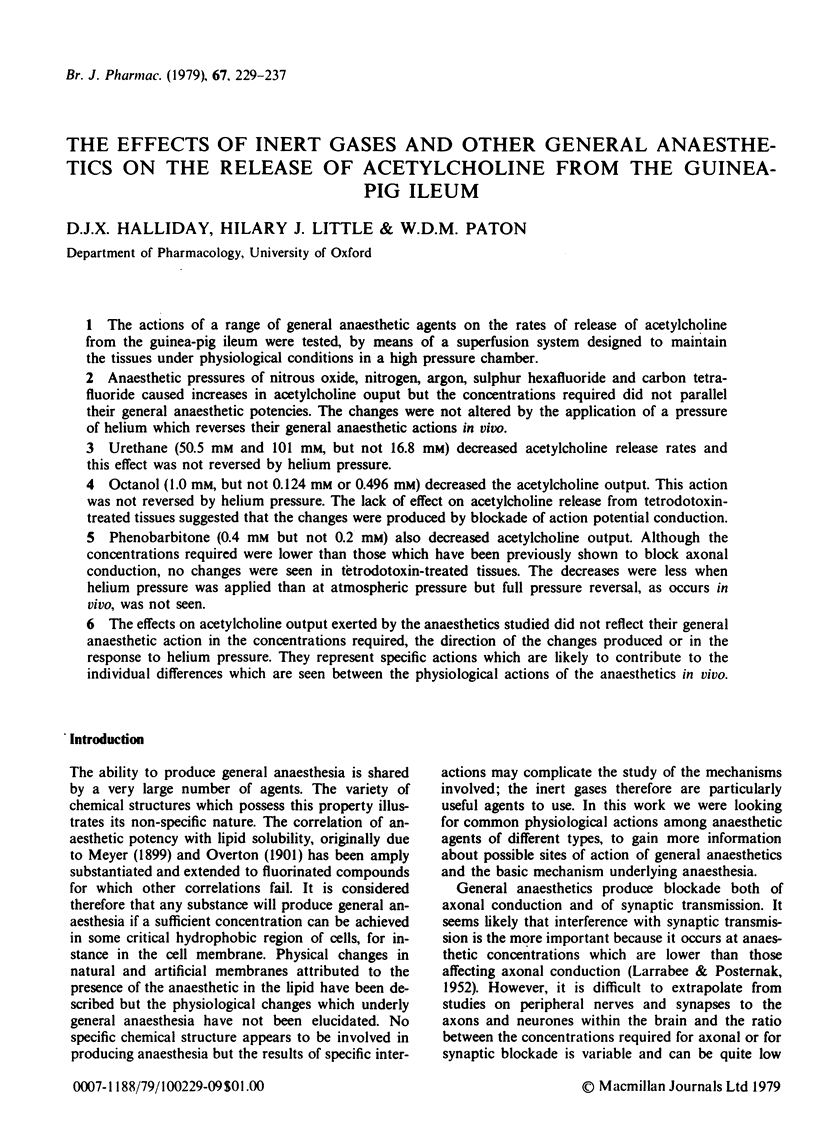
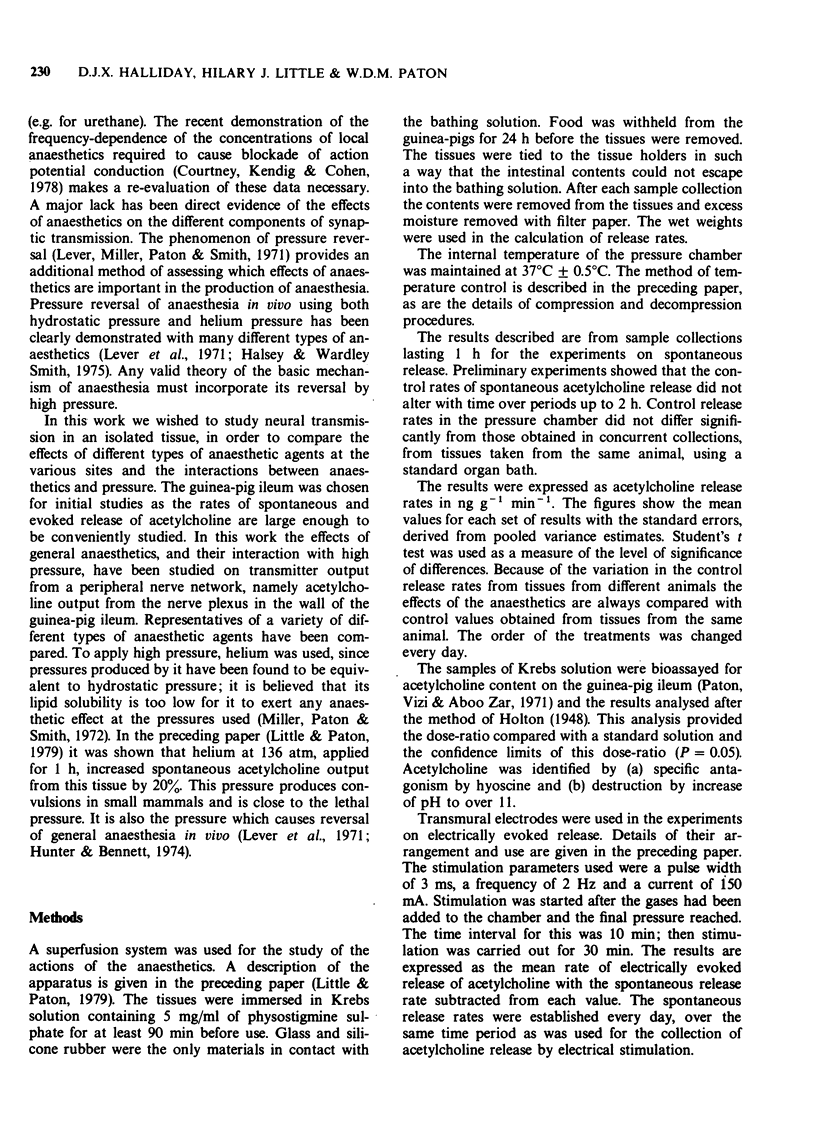
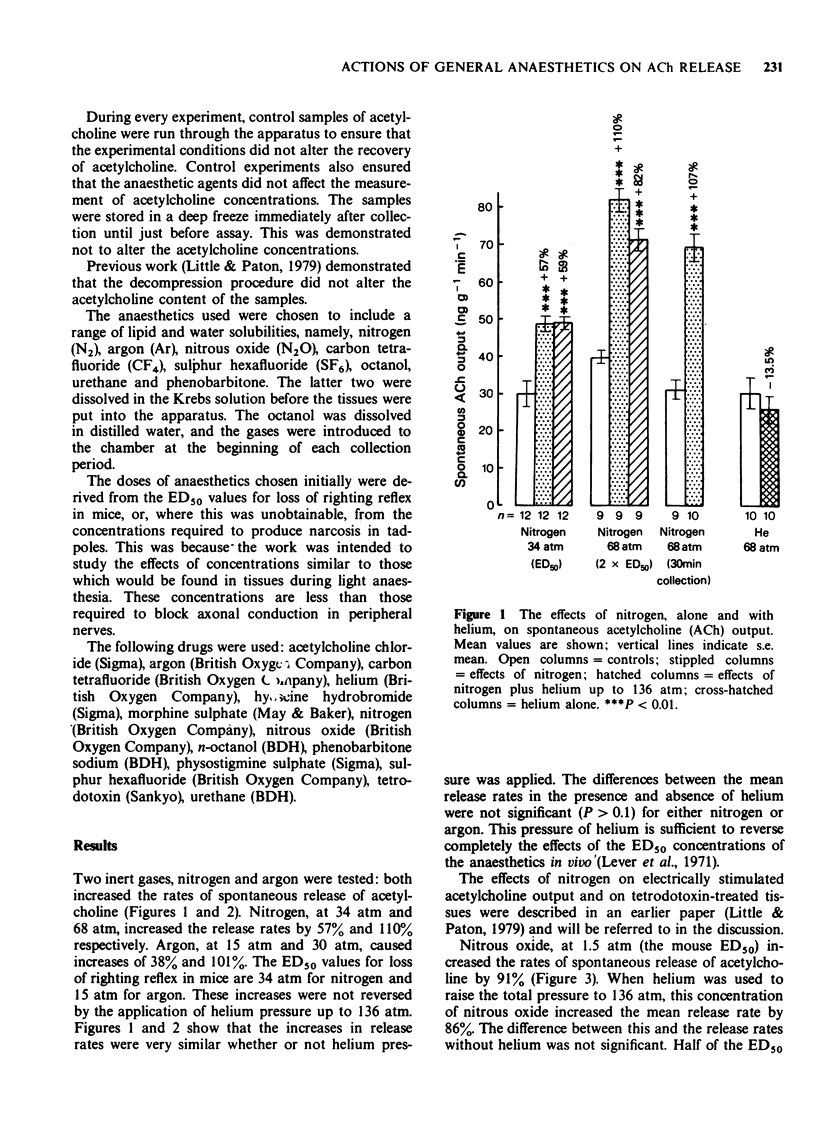
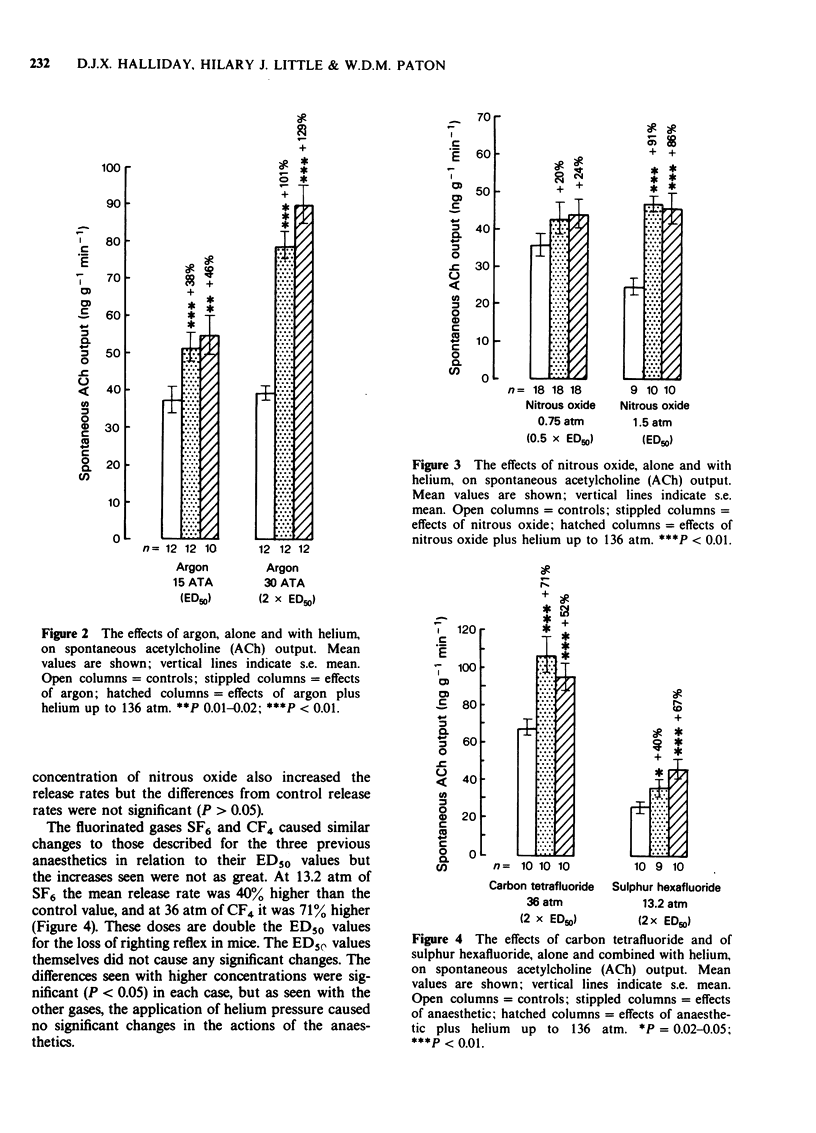
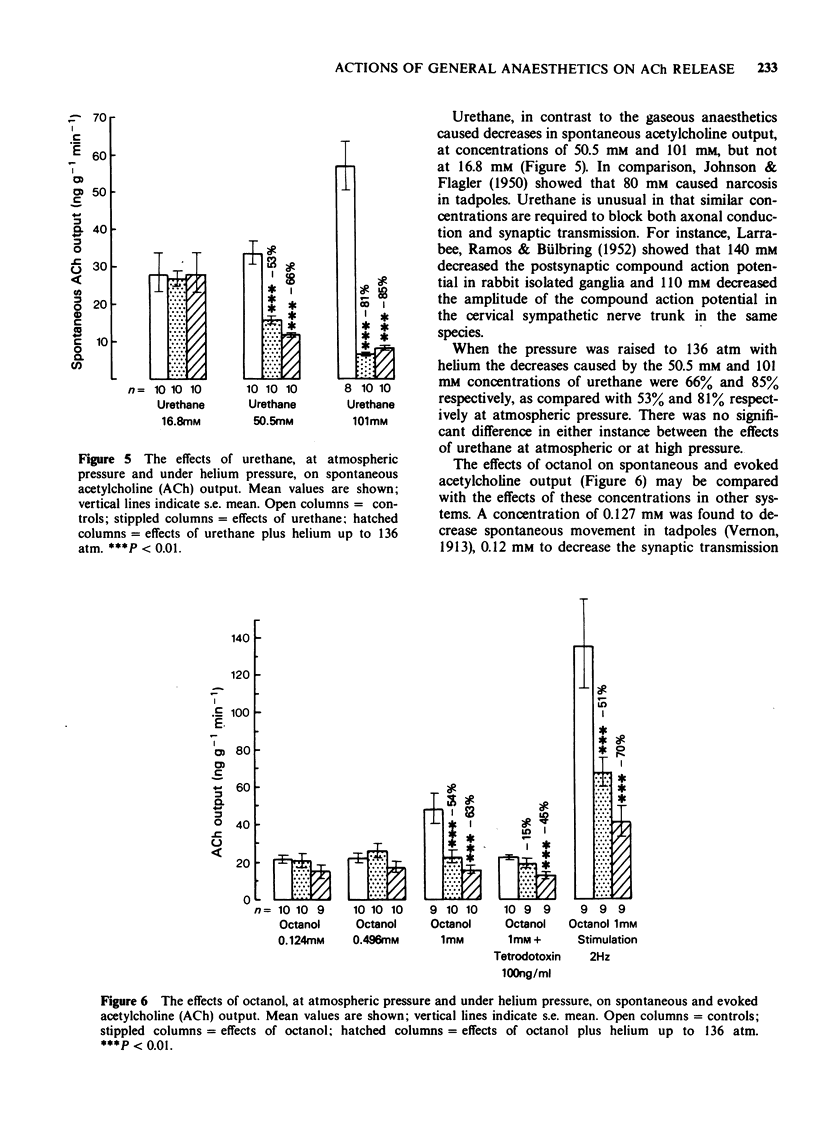
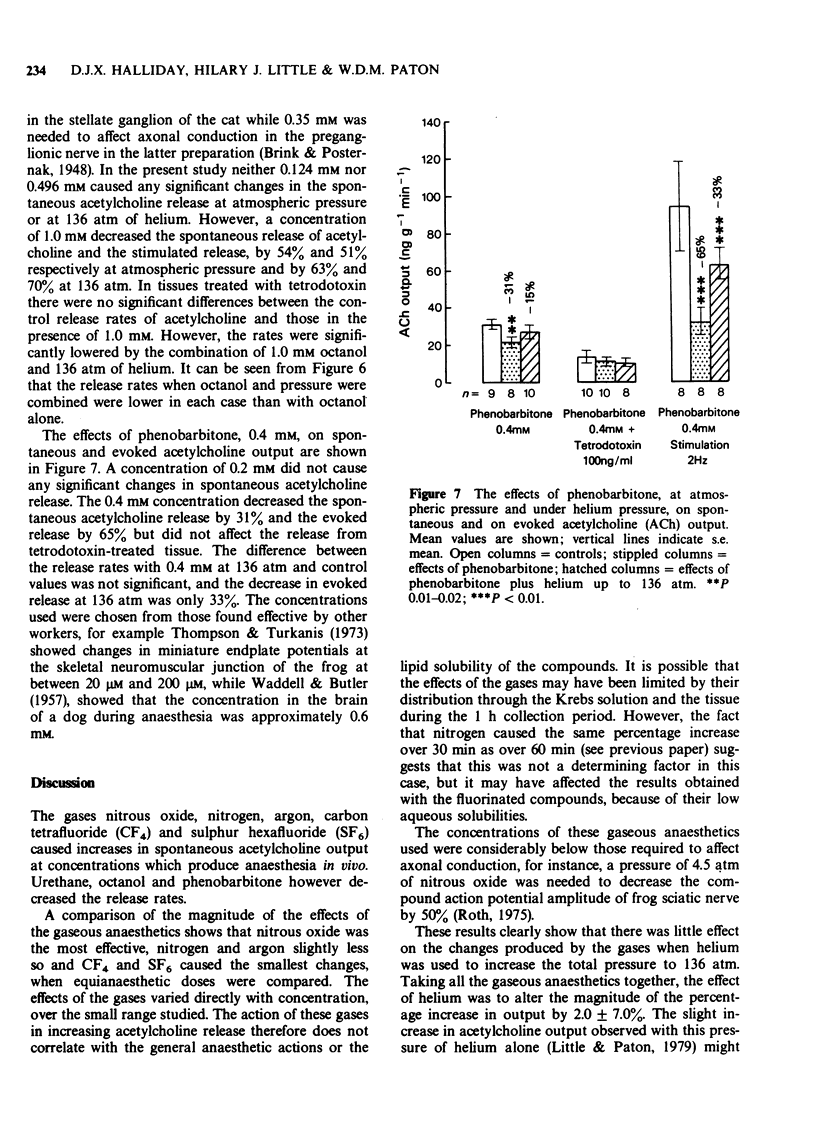
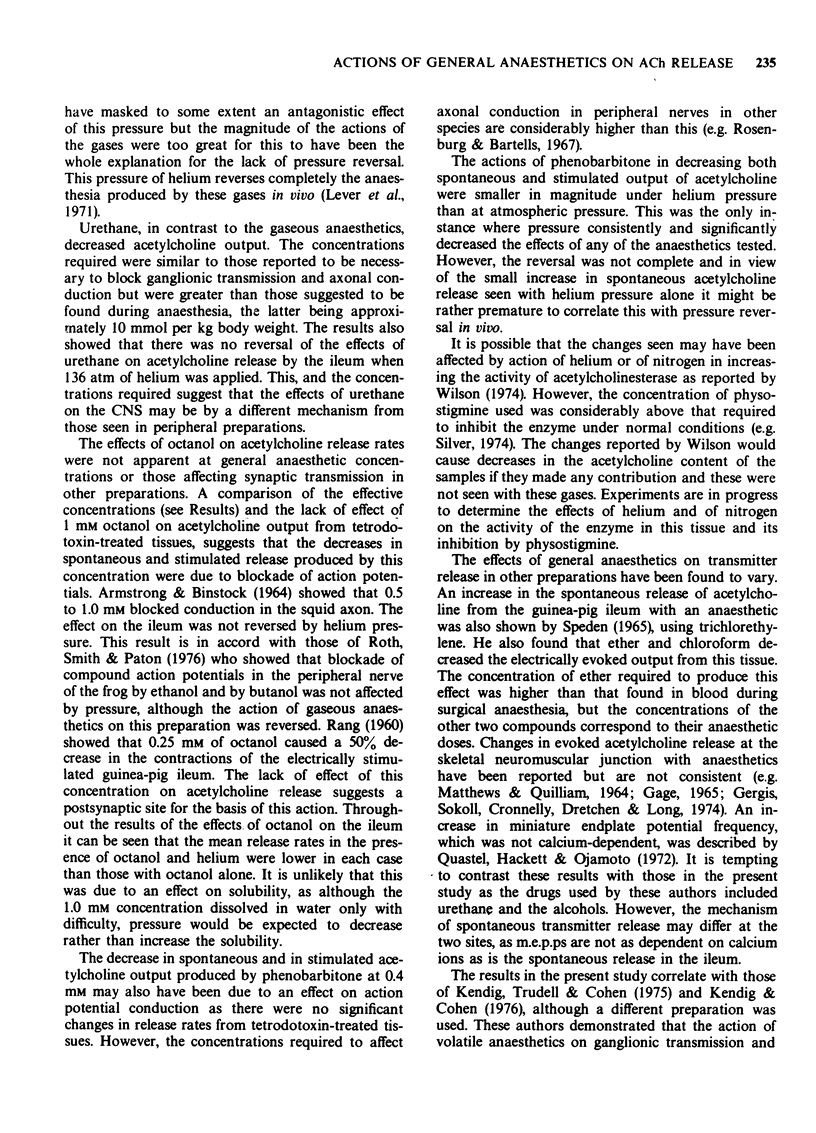
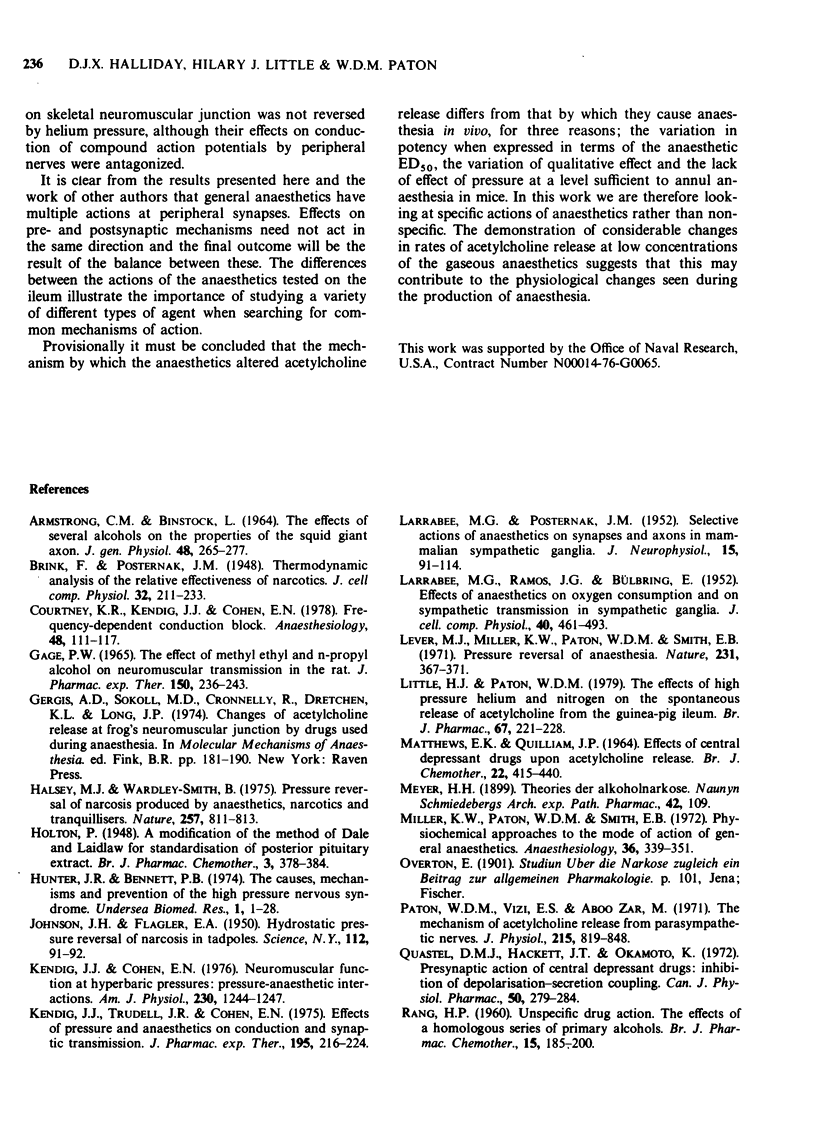
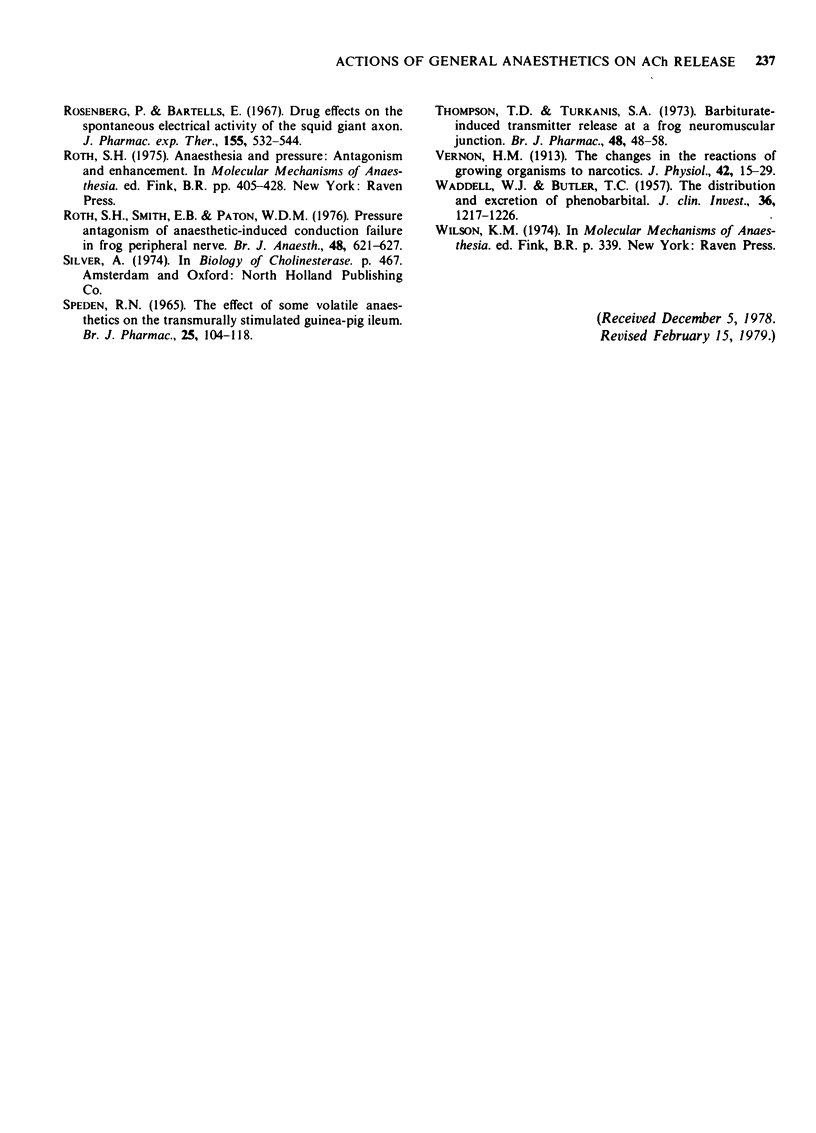
Selected References
These references are in PubMed. This may not be the complete list of references from this article.
- ARMSTRONG C. M., BINSTOCK L. THE EFFECTS OF SEVERAL ALCOHOLS ON THE PROPERTIES OF THE SQUID GIANT AXON. J Gen Physiol. 1964 Nov;48:265–277. doi: 10.1085/jgp.48.2.265. [DOI] [PMC free article] [PubMed] [Google Scholar]
- Courtney K. R., Kendig J. J., Cohen E. N. Frequency-dependent conduction block: the role of nerve impulse pattern in local anesthetic potency. Anesthesiology. 1978 Feb;48(2):111–117. [PubMed] [Google Scholar]
- Gage P. W. The effect of methyl, ethyl and n-propyl alcohol on neuromuscular transmission in the rat. J Pharmacol Exp Ther. 1965 Nov;150(2):236–243. [PubMed] [Google Scholar]
- Halsey M. J., Wardley-Smith B. Pressure reversal of narocsis produced by anaesthetics, narcotics and tranquillisers. Nature. 1975 Oct 30;257(5529):811–813. doi: 10.1038/257811a0. [DOI] [PubMed] [Google Scholar]
- Hunger W. L., Jr, Bennett P. B. The causes, mechanisms and prevention of the high pressure nervous syndrome. Undersea Biomed Res. 1974 Mar;1(1):1–28. [PubMed] [Google Scholar]
- JOHNSON F. H., FLAGLER E. A. Hydrostatic pressure reversal of narcosis in tadpoles. Science. 1950 Jul 21;112(2899):91–92. doi: 10.1126/science.112.2899.91-a. [DOI] [PubMed] [Google Scholar]
- Kendig J. J., Cohen E. N. Neuromuscular function at hyperbaric pressures: pressure-anesthetic interactions. Am J Physiol. 1976 May;230(5):1244–1249. doi: 10.1152/ajplegacy.1976.230.5.1244. [DOI] [PubMed] [Google Scholar]
- Kendig J. J., Trudell J. R., Cohen E. N. Effects of pressure and anesthetics on conduction and synaptic transmission. J Pharmacol Exp Ther. 1975 Nov;195(2):216–224. [PubMed] [Google Scholar]
- LARRABEE M. G., GARCIA RAMOS J., BULBRING E. Effects of anesthetics on oxygen consumption and on synaptic transmission in sympathetic ganglia. J Cell Physiol. 1952 Dec;40(3):461–494. doi: 10.1002/jcp.1030400309. [DOI] [PubMed] [Google Scholar]
- LARRABEE M. G., POSTERNAK J. M. Selective action of anesthetics on synapses and axons in mammalian sympathetic ganglia. J Neurophysiol. 1952 Mar;15(2):91–114. doi: 10.1152/jn.1952.15.2.91. [DOI] [PubMed] [Google Scholar]
- Lever M. J., Miller K. W., Paton W. D., Smith E. B. Pressure reversal of anaesthesia. Nature. 1971 Jun 11;231(5302):368–371. doi: 10.1038/231368a0. [DOI] [PubMed] [Google Scholar]
- Lttle H. J., Paton W. D. The effects of high pressure helium and nitrogen on the release of acetylcholine from the guinea-pig ileum. Br J Pharmacol. 1979 Oct;67(2):221–228. doi: 10.1111/j.1476-5381.1979.tb08670.x. [DOI] [PMC free article] [PubMed] [Google Scholar]
- MATTHEWS E. K., QUILLIAM J. P. EFFECTS OF CENTRAL DEPRESSANT DRUGS UPON ACETYLCHOLINE RELEASE. Br J Pharmacol Chemother. 1964 Apr;22:415–440. doi: 10.1111/j.1476-5381.1964.tb02047.x. [DOI] [PMC free article] [PubMed] [Google Scholar]
- Miller K. W., Paton W. D., Smith E. B., Smith R. A. Physicochemical approaches to the mode of action of general anesthetics. Anesthesiology. 1972 Apr;36(4):339–351. doi: 10.1097/00000542-197204000-00008. [DOI] [PubMed] [Google Scholar]
- Paton W. D., Vizi E. S., Zar M. A. The mechanism of acetylcholine release from parasympathetic nerves. J Physiol. 1971 Jul;215(3):819–848. doi: 10.1113/jphysiol.1971.sp009500. [DOI] [PMC free article] [PubMed] [Google Scholar]
- Quastel D. M., Hackett J. T., Okamoto K. Presynaptic action of central depressant drugs: inhibition of depolarization-secretion coupling. Can J Physiol Pharmacol. 1972 Mar;50(3):279–284. doi: 10.1139/y72-042. [DOI] [PubMed] [Google Scholar]
- RANG H. P. Unspecific drug action. The effects of a homologous series of primary alcohols. Br J Pharmacol Chemother. 1960 Mar;15:185–200. doi: 10.1111/j.1476-5381.1960.tb01230.x. [DOI] [PMC free article] [PubMed] [Google Scholar]
- Rosenberg P., Bartels E. Drug effects on the spontaneous electrical activity of the squid giant axon. J Pharmacol Exp Ther. 1967 Mar;155(3):532–544. [PubMed] [Google Scholar]
- Roth S. H., Smith R. A., Paton W. D. Pressure antagonism of anaesthetic-induced conduction failure in frog peripheral nerve. Br J Anaesth. 1976 Jul;48(7):621–628. doi: 10.1093/bja/48.7.621. [DOI] [PubMed] [Google Scholar]
- Thomson T. D., Turkanis S. A. Barbiturate-induced transmitter release at a frog neuromuscular junction. Br J Pharmacol. 1973 May;48(1):48–58. doi: 10.1111/j.1476-5381.1973.tb08221.x. [DOI] [PMC free article] [PubMed] [Google Scholar]
- Vernon H. M. The changes in the reaction of growing organisms to narcotics. J Physiol. 1913 Oct 17;47(1-2):15–29. doi: 10.1113/jphysiol.1913.sp001609. [DOI] [PMC free article] [PubMed] [Google Scholar]
- WADDELL W. J., BUTLER T. C. The distribution and excretion of phenobarbital. J Clin Invest. 1957 Aug;36(8):1217–1226. doi: 10.1172/JCI103518. [DOI] [PMC free article] [PubMed] [Google Scholar]


